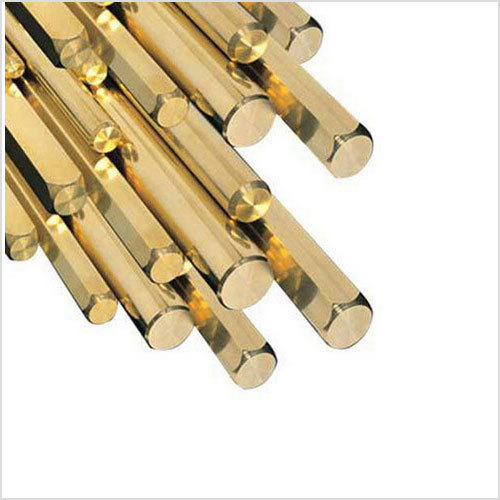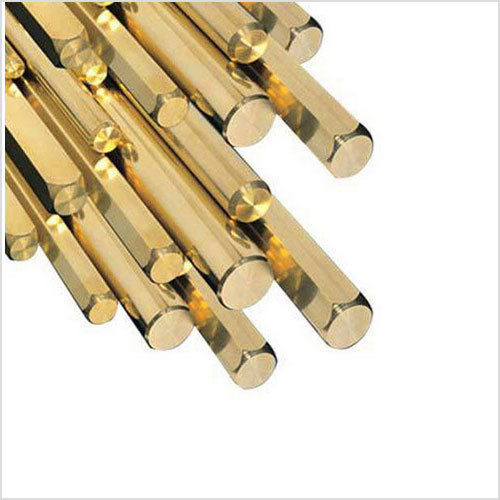IS 3488 Leaded Forging Brass
Product Details:
- Type Leaded Forging Brass
- Material Brass
- Grade IS 3488
- Tolerance 0.1 mm
- Alloy IS 3488
- Temper Forging
- Length Available as per requirement
- Click to View more
IS 3488 Leaded Forging Brass Price And Quantity
- 350.00 - 550.00 INR/Kilograms
- 500 Kilograms
IS 3488 Leaded Forging Brass Product Specifications
- As per size and length
- IS 3488
- Available as per requirement
- 8 mm 200 mm
- Golden Yellow
- IS 3488
- Forging
- 0.1 mm
- Leaded Forging Brass
- Brass
- Round, Hex, Square, and Custom Shapes
IS 3488 Leaded Forging Brass Trade Information
- 50000 Kilograms Per Month
- 4 Week
Product Description
IS 3488 Leaded Forging Brass
Our esteemed clients can avail from us a wide gamut of Forging Brass Rods, Extruded Brass Rods which have gained appreciation for it's international quality standards. Available in various sizes, thicknesses and specifications, these brass rods are largely used in various industries. Our competitively priced Forging Brass Rods are acknowledged for their high tensile strength, durable finish standards, corrosion resistance and sturdy designs.
Technical Specifications :
BS:218
IS3488
IS:6922
BS2874 CZ122
CuZn 38Pb1
1.5
| Chemical Requirements | CuZn42Pb2 | CuZn40Pb2 |
| Copper | 56.5 - 60.0% | 57.0 - 59.0% |
| Lead | 0.60 to 2.0% | 1.5 to 2.5% |
| Iron | 0.30% max | 0.40% max |
| Total Imp. Excl. Iron | 0.20% max | 0.70% max |
| Zinc | Remainder | Remainder |
| Physical Properties | ||
| Tensile Strength | 380 Mpa Min | 40 kg/mm2 Min. |
| Elongation % | 25% Min | 18% Min. |
| Izod Value | - | 2.0 KJ min |
| Fabrication Properties | ||
| Capacity for being | ||
| Cold worked | Poor | Poor |
| Hot formed | Excellent | Excellent |
| Hot forgeability rating | 100% | 100% |
| Machinability Rating | 80% | 80% |
| Suitability for soldering | Excellent | Excellent |
| Suitability for Brazing | Good | Good |
| Uses | |
| Forged Components, Industrial Valves, Defense components, Watch Case, Automobile Valves Components | |
High Performance Alloy for Precision Forging
IS 3488 Leaded Forging Brass delivers the strength and workability needed for demanding forging operations. With uniform lead content (1.7%-2.5%) and superior copper-zinc balance, its properties support excellent machinability and ease of forming into intricate shapes. This makes it a preferred choice for manufacturing critical components in the plumbing, valve, and hardware sectors.
Versatile Applications Across Multiple Industries
Owing to its excellent corrosion resistance and polished, golden-yellow finish, IS 3488 Leaded Forging Brass is widely chosen for applications in sanitary fittings, precision engineering, hardware, and valve parts. Its ability to be forged into bespoke sizes and shapesnow available upon requestfurther enhances its suitability for both standard and specialized project requirements.
FAQs of IS 3488 Leaded Forging Brass:
Q: How can IS 3488 Leaded Forging Brass be used in industrial applications?
A: IS 3488 Leaded Forging Brass is ideal for producing precision components, valve parts, sanitary fittings, and various hardware due to its excellent machinability and corrosion resistance. Its forging properties allow it to be shaped into complex forms used in multiple industries.Q: What is the process for obtaining custom sizes or shapes of this brass alloy?
A: Custom sizes and shapes can be requested directly from the supplier or manufacturer. Depending on your projects specifications, rods, bars, and sections can be produced in round, hex, square, or other custom shapes, with precise tolerances up to 0.1 mm.Q: When is IS 3488 Leaded Forging Brass preferred over other brass types?
A: This alloy is most often chosen when high machinability, good corrosion resistance, and reliable mechanical properties are critical. Its bright finish and adaptability to diverse shapes also make it a preferred material in plumbing and hardware manufacturing.Q: Where can this brass alloy be sourced in India?
A: IS 3488 Leaded Forging Brass is available from leading exporters, manufacturers, and suppliers across India. It is typically offered in rods, bars, and sections, with availability to cater to both domestic and international markets.Q: What are the main benefits of choosing IS 3488 Leaded Forging Brass for forging operations?
A: The primary benefits include excellent machinability, consistent mechanical strength (tensile strength 370 N/mm), superior elongation, and a polished finish. These features ensure ease of fabrication and high performance in finished components.Q: How does the lead content affect the performance of this brass alloy?
A: The controlled lead content (1.7%2.5%) enhances the alloys machinability, reducing tool wear and allowing smoother cutting and shaping. This makes it suitable for producing intricate, close-tolerance components with high precision.
Price:
- 50
- 100
- 200
- 250
- 500
- 1000+
Other Products in 'Forging Leaded Brass Rods' category
 |
METAL ALLOYS CORPORATION
All Rights Reserved.(Terms of Use) Developed and Managed by Infocom Network Private Limited. |













